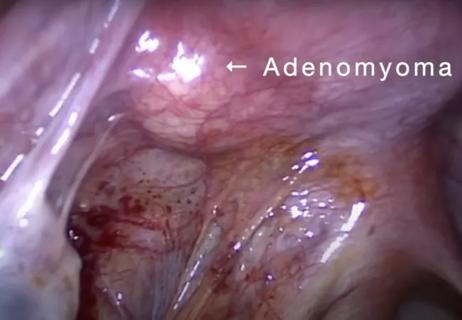Guidance for complications that occur during procedures

Uterine perforation can occur with any intrauterine procedure, with the risk of perforation ranging from 0.1% to 4%, depending on patient factors and the gynecological procedure. However, because data is based on self-reporting by surgeons, the true incidence is not known.
Advertisement
Cleveland Clinic is a non-profit academic medical center. Advertising on our site helps support our mission. We do not endorse non-Cleveland Clinic products or services. Policy
“While uterine perforation can be associated with severe morbidity and even mortality, most events are relatively benign and many are not recognized or reported,” says Elliott Richards, MD. “Any surgeon who performs hysteroscopic operations in large volume will have one or more patients experience this complication.”
Richards co-authored an invited article in JAMA Insights on uterine perforations during gynecological procedures. It covers prevention, recognition and management of the surgical complication.
“When a uterine perforation happens, it’s important to recognize the event — and not panic — so that you can know what next steps to take,” says Dr. Richards.
The risk of uterine perforation varies widely based on the procedure. It is highest during postpartum procedures, when the wall of the uterus has weakened and there is some distortion of the anatomy. The risk decreases during operative hysteroscopies and is lowest in diagnostic hysteroscopies.
Certain patient factors also increase the risk, including:
Perforations can occur in lateral, fundal, anterior or posterior aspects of the uterus. To mitigate the risks, Dr. Richards encourages surgeons to conduct a thorough preoperative evaluation so they understand both general and patient-specific anatomy.
“Doing a bimanual pelvic examination either before the surgery or prior to dilation is critical,” he says.
Advertisement
In addition, Dr. Richards stresses the importance of instrument selection.
“If the patient has a history of difficult dilation or a tortuous cervix, consider using instruments such as smooth malleable plastic dilators or a tenaculum to straighten out the cervical canal,” says Dr. Richards. One must ensure safe and proper use of energized instruments, which can greatly complicate a uterine perforation by damaging structures around the uterus, such as the bladder and bowel.
“Taking a little bit more time with intraoperative ultrasound and specialized dilators can make a big difference,” he says.
“The majority of perforations can just be observed, especially if they are caused by a blunt instrument and there is no active bleeding,” says Dr. Richards. “But if there are concerns, you should perform a laparoscopy or laparotomy to ensure there is no damage to surrounding structures or blood vessels.”
Management of uterine perforations depends upon the location and severity:
The complications involving uterine perforation are often most serious when it is not immediately recognized and treated intraoperatively.
After completion of any hysteroscopic procedure, physicians need to be aware of signs and symptoms of undiagnosed perforation, which include ongoing or worsening pelvic pain, abdominal distension, fever, hemodynamic instability or vaginal discharge. Delayed recognition has more serious consequences than intraoperative recognition and treatment.
Advertisement
If surgeons suspect a uterine perforation in this setting, evaluation should include measurement of hemoglobin and hematocrit, coagulation tests, pelvic ultrasound and even a CT scan if results are normal but clinical suspicion remains high.
Dr. Richards adds that communication is key both with patients and the care team.
“Overall, it comes down to using good judgment and remaining calm,” says Dr. Richards. “Even the best surgeons have complications. It’s about knowing when and how to act appropriately for the safety of the patient.”
Advertisement
Advertisement

Retrospective study aims to better stratify risk of disease recurrence

A Q&A with Cara King, DO, MS, on the upleveling power of coaching

Approach could help clinicians identify patients at an increased risk of progression who could benefit from more aggressive treatment

New guidelines let the patients steer the process

Study indicates patients can have confidence about potential outcomes

A multicenter cohort study of patients with obesity suggests a decreased risk of developing new obesity-related cancers in patients with a history of bariatric surgery

Coordinated care for patients with placenta accreta or a history of abdominal surgeries

Laparoscopic surgery provides relief for teenage patient with adenomyoma and endometriosis